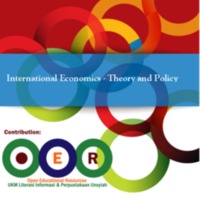International Economics: Theory and Policy
Dublin Core
Subject
Description
This text strives to reach a median between these two approaches. First, I believe that students need to learn the theory and models to understand how economists understand the world. I also think these ideas are accessible to most students if they are explained thoroughly. This text presents numerous models in some detail, not by employing advanced mathematics, but rather by walking students through a detailed description of how a model’s assumptions influence its conclusions. Second, and perhaps more important, students must learn how the models connect with the real world. I believe that theory is done primarily to guide policy. We do positive economics to help answer the normative questions; for example, what should a country do about its trade policy or its exchange rate policy? The results from models give us insights that help us answer these questions. Thus this text strives to explain why each model is interesting by connecting its results to some aspect of a current policy issue. A prime example is found in Chapter 11 "Evaluating the Controversy between Free Trade and Protectionism" of this book, which addresses the age-old question of whether countries should choose free trade or some type of selected protection. The chapter demonstrates how the results of the various models presented throughout the text contribute to our understanding of this long-standing debate.
Creator
Publisher
Contributor
Cut Rita Zahara
Rights
Creative Commons
Type
Files
Collection
Citation
Steve Suranovic, “International Economics: Theory and Policy,” Open Educational Resources (OER) , accessed August 22, 2025, https://oer.uinsyahada.ac.id/items/show/837.


